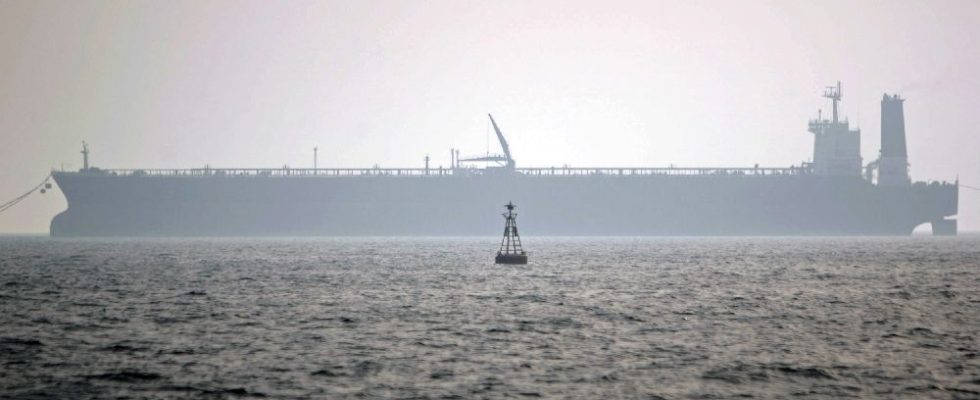Are we on the verge of a new oil shock? The question has come up again and again since the attack launched on Saturday October 7 by the Palestinian Islamist movement Hamas on Israel. The parallel between October 2023 and October 1973 is striking: surprise strike, significant risks of military escalation, jump in the price of black gold on the markets… Fifty years after the first major oil crisis, the same sequence seems to be replaying itself. At the time, it had brought the world economy to the ground. This time, however, the world could avoid the worst, want to believe the experts, who anticipate lasting tensions on prices, rather than a devastating surge. “Let’s be clear: since the attacks on Israel, many scenarios are possible. This means that the risk premium will remain. However, I do not believe in a barrel of oil at 200 dollars,” explains Alexandre Andlauer, energy analyst at Kpler.
First, because the events do not directly concern producing countries. A little over a year ago, the announcement of the reduction in Russian gas deliveries to Europe quickly led to a 40% increase in prices. In this case, the market reaction was measured. “There was initially a very relative surge in prices. Because for investors, the parallel with 1973 has no place. Certainly, this is the worst attack suffered on Israeli soil since then, but we are not in a situation of unity in the Arab world around oil. Furthermore, the market sees that there is no strong signal of Saudi Arabia calling into question the rapprochement which was underway with Israel”, confirms Gilles Moëc, chief economist of the Axa group.
In this period of tension, many eyes are turning towards Iran, suspected of having played a role in the attack by the terrorist organization. “This poses an inevitable question: what if Israel attacked Iran? The dispute between the two countries is extremely important and has existed for a long time. The Israelis have indicated that they will not tolerate Iran acquiring nuclear means”, recalls Benjamin Louvet, raw materials manager at OFI AM. The worst scenario would be a direct attack by Israel on Iranian uranium enrichment facilities. For Canadian strategist Dan Alamariu, of the Alpine Macro firm, this extreme scenario, if it materializes, could push prices towards 150 dollars per barrel.
Iran’s power to cause harm
Still, the most likely consequence in the short term is undoubtedly that of a strengthening of American sanctions against Iran, which would potentially deprive the market of 500,000 to 1 million barrels per day, warns Alexandre Andlauer . For its part, Tehran has a powerful lever for intervention: the possibility of blocking the Strait of Hormuz, which is a major oil crossing point with 20% of transit. “But what would be the point for Iran, whose economic situation is already very difficult, to deprive itself of this source of financing?” asks Gilles Moëc.
Furthermore, will the Mullahs’ regime really succeed in blocking a 50 kilometer wide canal with American military forces nearby? “This channel may have been disrupted in the past, but it has never been completely closed. This would therefore be unprecedented,” notes Alexandre Andlauer. In this uncertain picture, Saudi Arabia appears as a stabilizing element. “If Iran leaves the market, it could increase its production in order to absorb the shock,” believes Benjamin Louvet. Why would she do this? Saudi Arabia, which seeks to normalize its relations with the West and above all to convince large multinationals to invest in the Kingdom to accelerate the diversification of its economy, has little interest in provoking a new oil shock which would put the global economy on land.
“Generally speaking, OPEC countries are not prepared to let the price of a barrel rise to $200. This would lead to a collapse in global demand, and therefore, potentially, their export revenues and their budgetary revenues. However, they would undoubtedly be satisfied with a price increase of 15 to 20%”, specifies an expert. “The probability of seeing oil prices exceed 100 dollars in the short term and then move around this level next year has increased,” summarizes Gilles Moëc. The good news ? Our economies are much less sensitive to an increase in the price of black gold than fifty years ago. To produce so much, they use three times less oil. The macroeconomic impact of a new shock on the markets would therefore be less profound. However, this could generate 0.5 points of inflation more. Enough to revive tensions around household purchasing power.
“We don’t necessarily realize it, but the risk for Europe comes more from gas. We have managed to replace 90% of Russian supplies. But the remaining 10% pose a problem, estimates Alexandre Andlauer. On the market , the situation remains tense: we recently saw that a simple strike at an Australian LNG producer could lead to a double-digit price increase. If we face a harsh winter or if the increase in activity turns out to be more stronger than expected in Asia, we risk being in difficulty.” Europe is not yet finished with the energy crisis.
